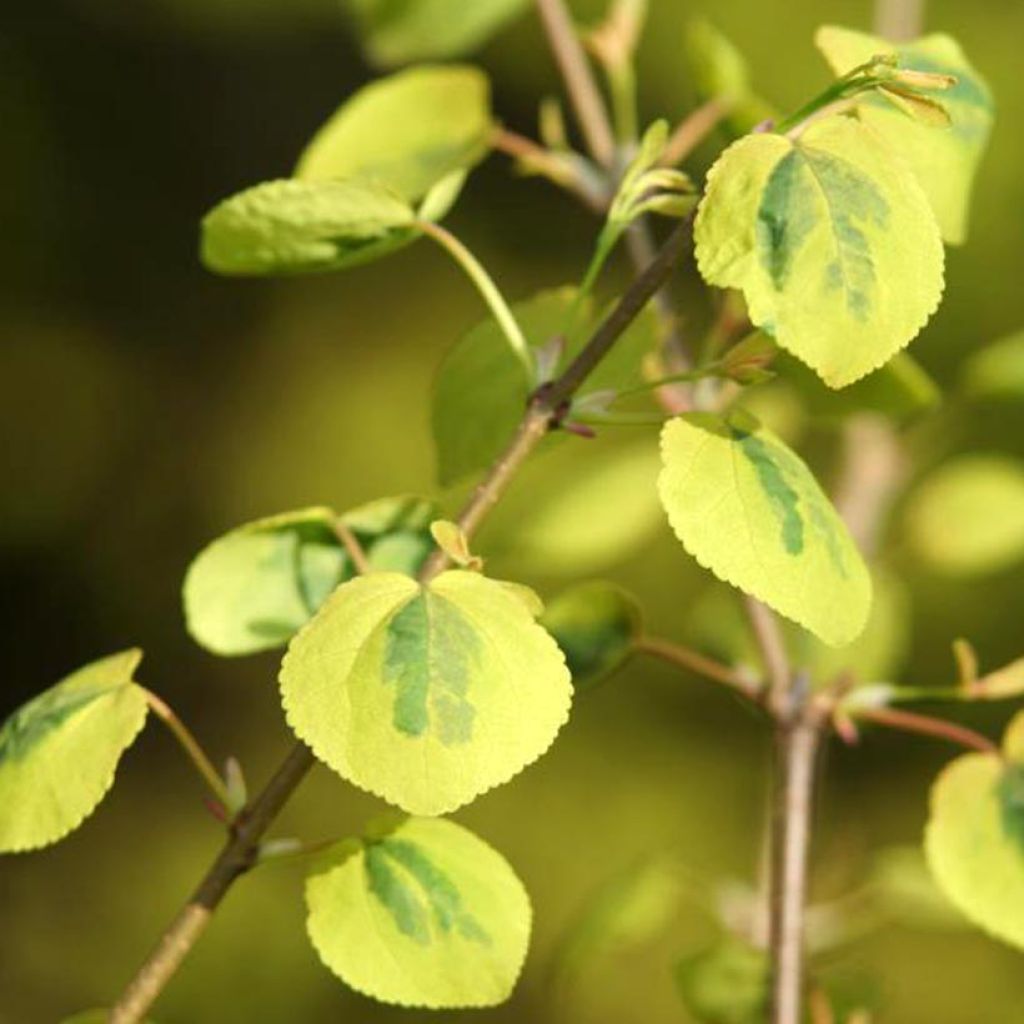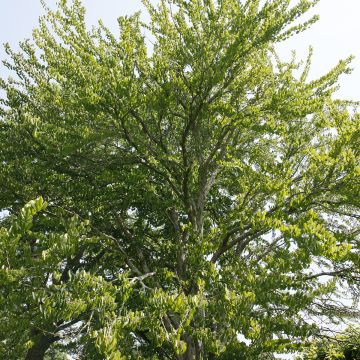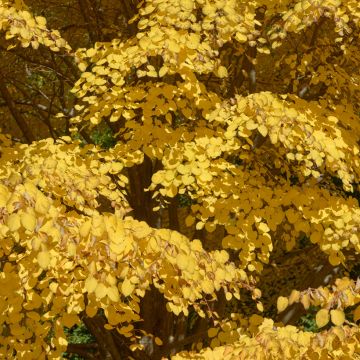

Cercidiphyllum japonicum Chameleon
Cercidiphyllum japonicum Chameleon
Cercidiphyllum japonicum Chameleon
Katsura tree, Japanese Judas-tree
Special offer!
Receive a €20 voucher for any order over €90 (excluding delivery costs, credit notes, and plastic-free options)!
1- Add your favorite plants to your cart.
2- Once you have reached €90, confirm your order (you can even choose the delivery date!).
3- As soon as your order is shipped, you will receive an email containing your voucher code, valid for 3 months (90 days).
Your voucher is unique and can only be used once, for any order with a minimum value of €20, excluding delivery costs.
Can be combined with other current offers, non-divisible and non-refundable.
Home or relay delivery (depending on size and destination)
Schedule delivery date,
and select date in basket
This plant carries a 24 months recovery warranty
More information
We guarantee the quality of our plants for a full growing cycle, and will replace at our expense any plant that fails to recover under normal climatic and planting conditions.
Would this plant suit my garden?
Set up your Plantfit profile →
Description
Cercidiphyllum japonicum 'Chameleon' is a variety of caramel tree that stands out from all others with its variegated foliage. Of modest size, it forms a tree with a gracefully rounded habit, perfect for planting as a specimen in a space-limited garden. It is a particularly bright cultivar due to its green-blue foliage with wide yellow margins. The colouration is intense on the young leaves in spring, then the yellow fades to cream, before the fiery autumn display. This foliage truly lights up the garden just before winter. The leaves of this tree emit a pleasant fragrance when crushed or walked upon, reminiscent of caramel or brown sugar.
Cercidiphyllum japonicum is a deciduous tree that grows quickly. It is the only species in the Cercidiphyllaceae family and is native to China and Japan. Although it has become rare in its native countries, it is now common in parks and gardens in Europe. When allowed to grow naturally, the tree develops multiple trunks forming narrow forks, with short branches spreading horizontally in tiers. Although it can reach heights of 30 to 45m (98 to 148ft) in its native range, it usually only reaches 12 to 15m (39 to 49ft) in our climates, with a spread of 6 to 8m (20 to 26ft).
Cercidiphyllum japonicum 'Chameleon' is a small variegated variety. It has a rounded habit and reaches approximately 4m (13ft) in height and 3m (10ft) in width. Its heart-shaped leaves somewhat resemble those of the Judas tree, Cercis, which is likely the origin of its species name "Cercidiphyllum", literally "with leaves like Cercis". They measure about 7cm (3in) in diameter and have slightly serrated edges. At the beginning of the season, their lamina shows a pinkish tint, then turns glaucous green to blue-green with more or less vibrant yellow margins, with the underside being whitish; they take on a lovely autumn colouration of red, orange, and yellow. It is commonly believed that slightly acidic soil enhances the intensity of the colours. It is during this time that the leaves emit their characteristic caramel fragrance, to varying degrees. The spring flowering, a somewhat dull pink-red, is of little interest, as male and female flowers are borne on separate trees. The trunk is covered with a fairly regular grey-brown bark that quickly develops a few superficial wrinkles. It exfoliates slightly over time.
We recommend planting the caramel tree as a standalone specimen, on a lawn, allowing it to flourish freely, or surrounded by low shrubs or perennials that evolve throughout the seasons; such as a beautiful climbing Clematis heracleifolia, a Lespedeza thunbergii, silver candles, alchemillas, corydalis, the Chrysanthemum 'Mei Kyo'.
Report an error about the product description
Plant habit
Flowering
Foliage
Botanical data
Cercidiphyllum
japonicum
Chameleon
Cercidiphyllaceae
Katsura tree, Japanese Judas-tree
Cultivar or hybrid
Other Cercidiphyllum
View all →Planting and care
The Chameleon plant (Cercidiphyllum japonicum) is a low-maintenance vine that can grow easily in most climates, provided it is planted in deep soil away from the sea or hotter areas. It grows fairly quickly in suitable soil, so it's best to plant it during autumn or winter after carefully selecting an ideal location, as it does not like being moved. Plant it in fertile, humus-rich soil with a neutral pH for best results and beautiful foliage. However, it can also grow in neutral to alkaline soil in non-burning sun or partial shade. While the young foliage is sensitive to late frosts and drying winds, the caramel tree requires no particular maintenance.
Planting period
Intended location
Care
This item has not been reviewed yet - be the first to leave a review about it.
Haven't found what you were looking for?
Hardiness is the lowest winter temperature a plant can endure without suffering serious damage or even dying. However, hardiness is affected by location (a sheltered area, such as a patio), protection (winter cover) and soil type (hardiness is improved by well-drained soil).

Photo Sharing Terms & Conditions
In order to encourage gardeners to interact and share their experiences, Promesse de fleurs offers various media enabling content to be uploaded onto its Site - in particular via the ‘Photo sharing’ module.
The User agrees to refrain from:
- Posting any content that is illegal, prejudicial, insulting, racist, inciteful to hatred, revisionist, contrary to public decency, that infringes on privacy or on the privacy rights of third parties, in particular the publicity rights of persons and goods, intellectual property rights, or the right to privacy.
- Submitting content on behalf of a third party;
- Impersonate the identity of a third party and/or publish any personal information about a third party;
In general, the User undertakes to refrain from any unethical behaviour.
All Content (in particular text, comments, files, images, photos, videos, creative works, etc.), which may be subject to property or intellectual property rights, image or other private rights, shall remain the property of the User, subject to the limited rights granted by the terms of the licence granted by Promesse de fleurs as stated below. Users are at liberty to publish or not to publish such Content on the Site, notably via the ‘Photo Sharing’ facility, and accept that this Content shall be made public and freely accessible, notably on the Internet.
Users further acknowledge, undertake to have ,and guarantee that they hold all necessary rights and permissions to publish such material on the Site, in particular with regard to the legislation in force pertaining to any privacy, property, intellectual property, image, or contractual rights, or rights of any other nature. By publishing such Content on the Site, Users acknowledge accepting full liability as publishers of the Content within the meaning of the law, and grant Promesse de fleurs, free of charge, an inclusive, worldwide licence for the said Content for the entire duration of its publication, including all reproduction, representation, up/downloading, displaying, performing, transmission, and storage rights.
Users also grant permission for their name to be linked to the Content and accept that this link may not always be made available.
By engaging in posting material, Users consent to their Content becoming automatically accessible on the Internet, in particular on other sites and/or blogs and/or web pages of the Promesse de fleurs site, including in particular social pages and the Promesse de fleurs catalogue.
Users may secure the removal of entrusted content free of charge by issuing a simple request via our contact form.
The flowering period indicated on our website applies to countries and regions located in USDA zone 8 (France, the United Kingdom, Ireland, the Netherlands, etc.)
It will vary according to where you live:
- In zones 9 to 10 (Italy, Spain, Greece, etc.), flowering will occur about 2 to 4 weeks earlier.
- In zones 6 to 7 (Germany, Poland, Slovenia, and lower mountainous regions), flowering will be delayed by 2 to 3 weeks.
- In zone 5 (Central Europe, Scandinavia), blooming will be delayed by 3 to 5 weeks.
In temperate climates, pruning of spring-flowering shrubs (forsythia, spireas, etc.) should be done just after flowering.
Pruning of summer-flowering shrubs (Indian Lilac, Perovskia, etc.) can be done in winter or spring.
In cold regions as well as with frost-sensitive plants, avoid pruning too early when severe frosts may still occur.
The planting period indicated on our website applies to countries and regions located in USDA zone 8 (France, United Kingdom, Ireland, Netherlands).
It will vary according to where you live:
- In Mediterranean zones (Marseille, Madrid, Milan, etc.), autumn and winter are the best planting periods.
- In continental zones (Strasbourg, Munich, Vienna, etc.), delay planting by 2 to 3 weeks in spring and bring it forward by 2 to 4 weeks in autumn.
- In mountainous regions (the Alps, Pyrenees, Carpathians, etc.), it is best to plant in late spring (May-June) or late summer (August-September).
The harvesting period indicated on our website applies to countries and regions in USDA zone 8 (France, England, Ireland, the Netherlands).
In colder areas (Scandinavia, Poland, Austria...) fruit and vegetable harvests are likely to be delayed by 3-4 weeks.
In warmer areas (Italy, Spain, Greece, etc.), harvesting will probably take place earlier, depending on weather conditions.
The sowing periods indicated on our website apply to countries and regions within USDA Zone 8 (France, UK, Ireland, Netherlands).
In colder areas (Scandinavia, Poland, Austria...), delay any outdoor sowing by 3-4 weeks, or sow under glass.
In warmer climes (Italy, Spain, Greece, etc.), bring outdoor sowing forward by a few weeks.



































